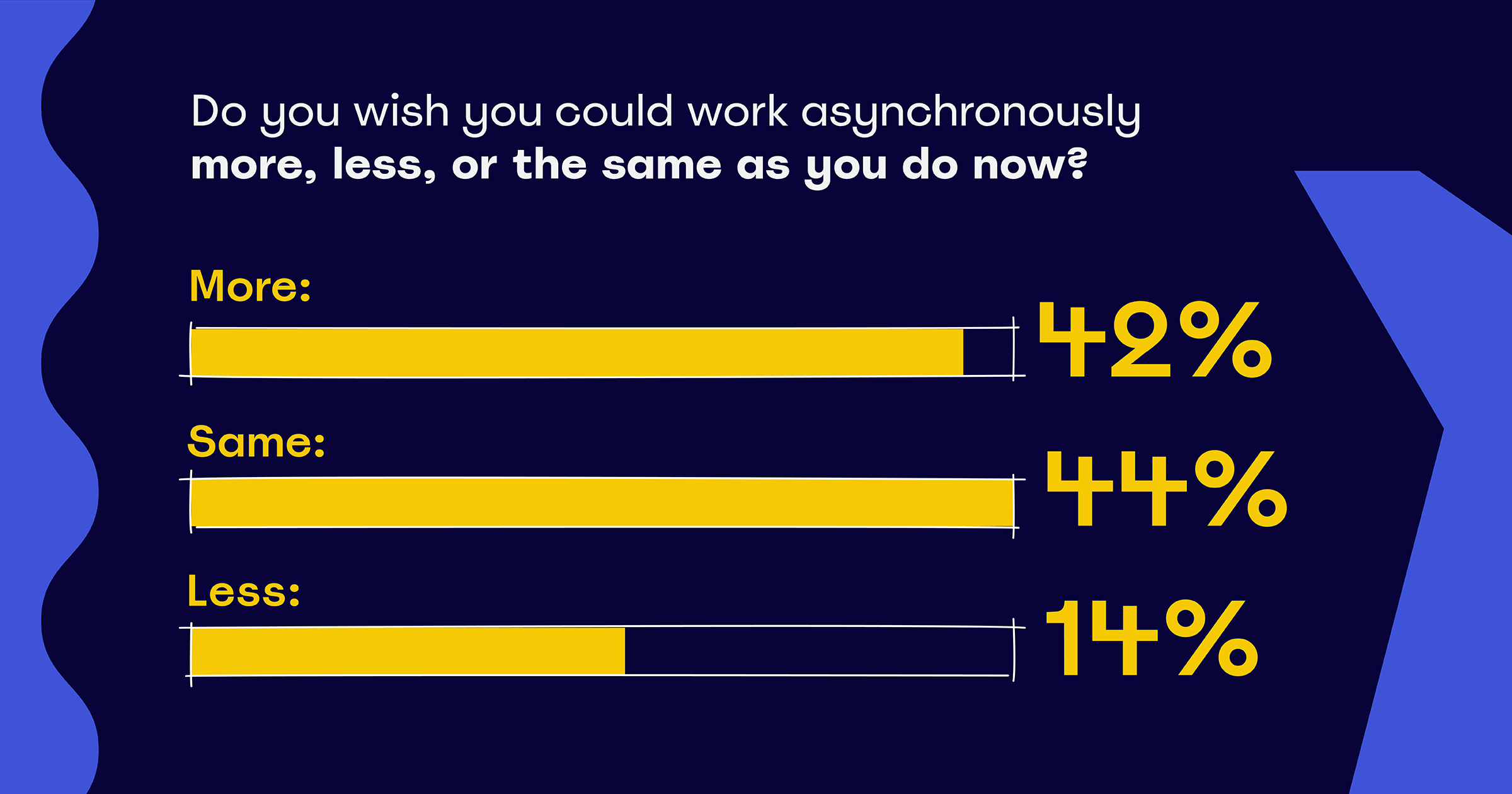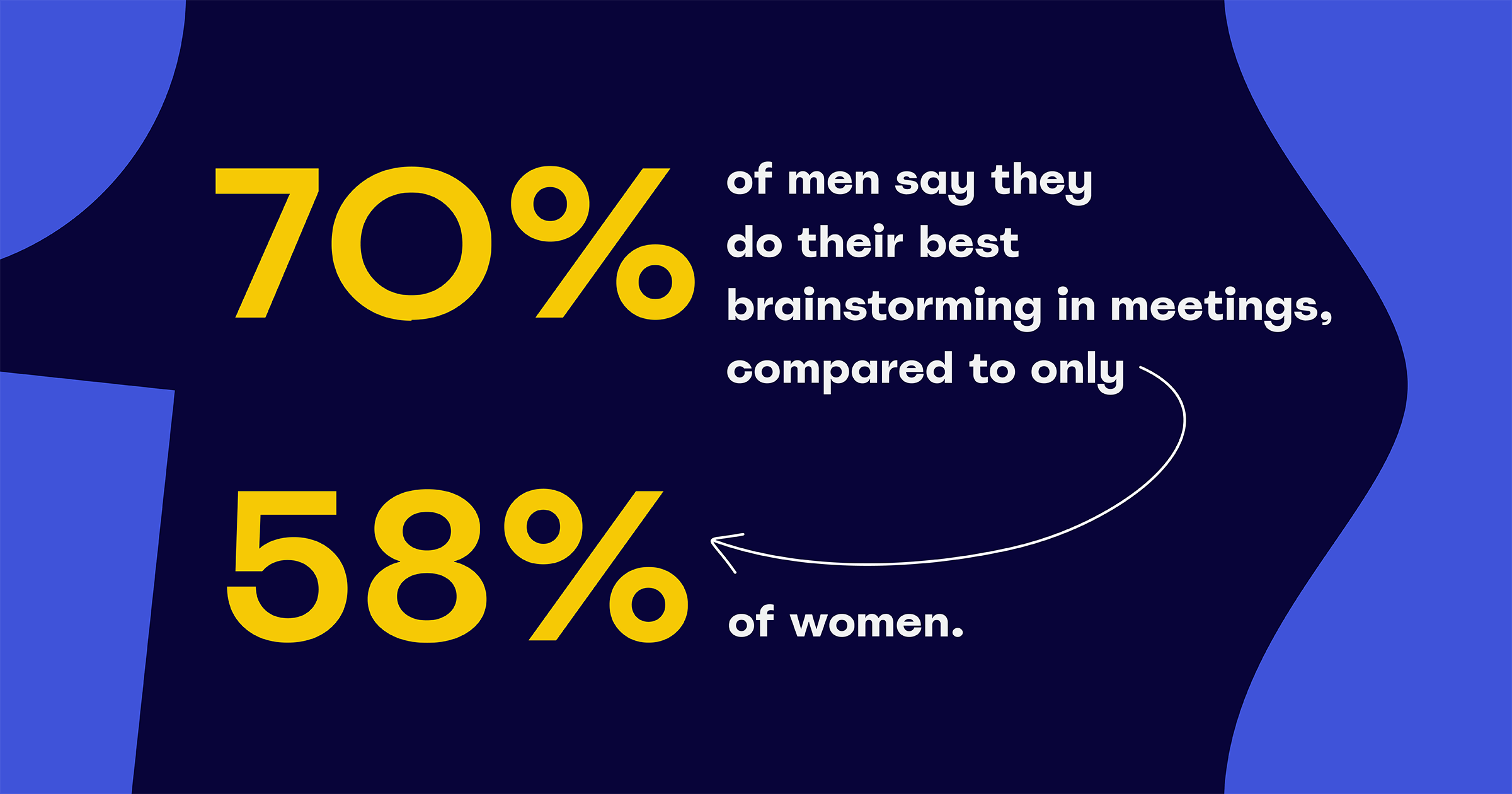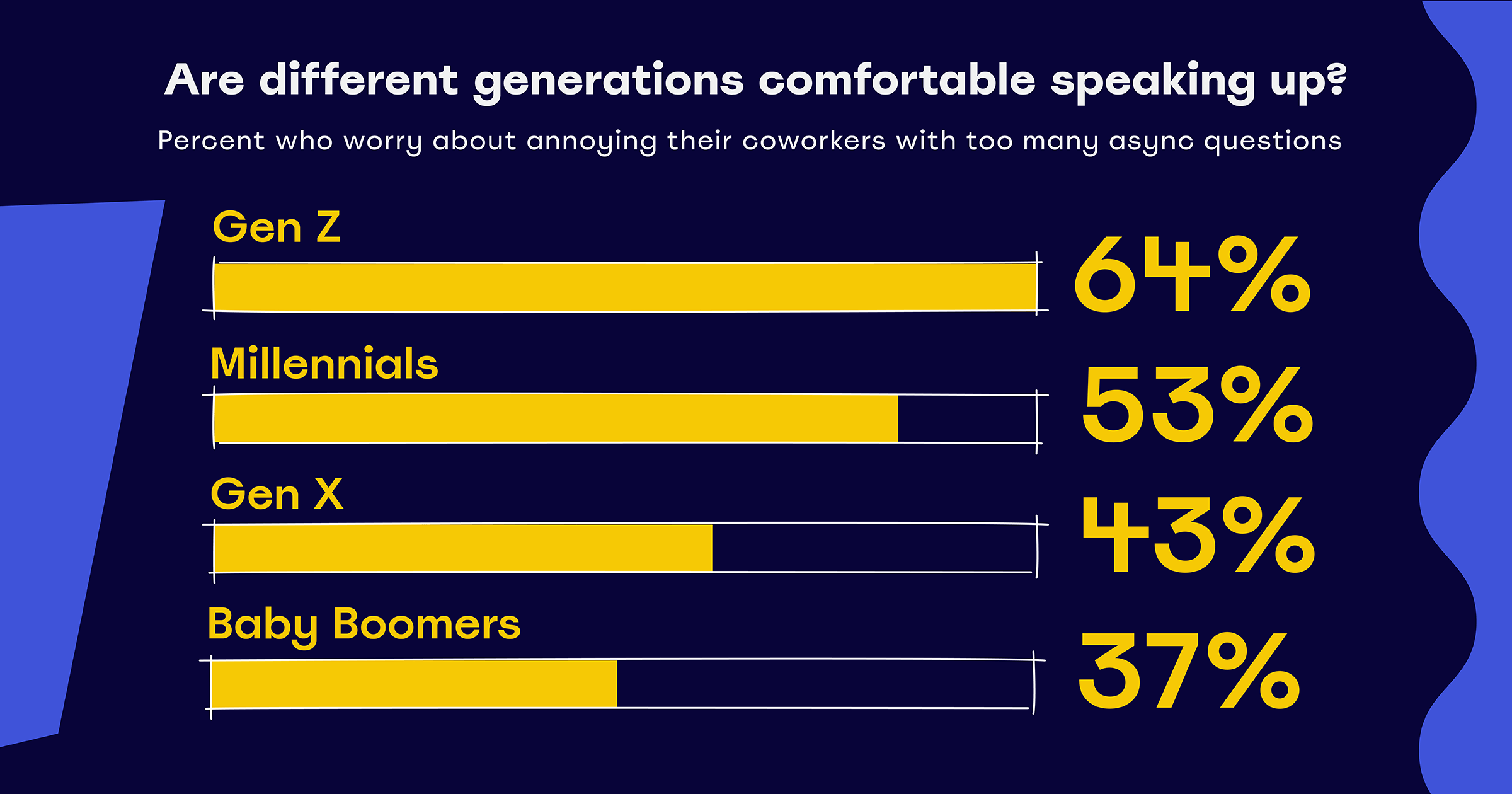When you give something a name, you make it real in a new way. Knowledge workers are seeing this firsthand with asynchronous work (or “async”), which is when team members work on the same project or problem but at different times instead of synchronously. Suddenly, the term is everywhere — but asynchronous work is more than a buzzword.
Not just a by-product of the shift to remote or hybrid, it’s about strategically making new ways of working work. Async can help people cut down on unnecessary meetings, connect across time zones, achieve flexibility, and it even contributes to job satisfaction. But what do knowledge workers think about async?
At Miro, we wanted to learn more about how people are navigating this shift: what’s working, what’s not, and why? So we surveyed 2,228 knowledge workers in the U.S. Our findings generate new insights into their hopes, preferences, and worries about asynchronous work, and highlight important ways that leaders can leverage these new ways of working to build more inclusive work practices.
Only 14% of knowledge workers want less asynchronous work
Gone are the days of meetings as the go-to: now it’s about knowing when, how, and why to collaborate in real time. Knowledge workers are overwhelmingly positive about the shift to asynchronous work: only 14% say they wish they worked async less than they currently do, while others are fairly evenly split between wanting to work more (42%) or the same (44%). So is this just about wanting to get out of meetings? We find the story isn’t so simple.

Sure, nearly everyone knows the feeling of being stuck in a meeting that could (or should) have been an email. 22% of knowledge workers say this happens daily, while 40% report it as a weekly occurrence and a mere 4% say this has never happened to them.
But forget the myth that people think meetings are bad — knowledge workers’ feelings on meetings are more complicated than meets the eye. Let’s start with the positives.
- They say meetings bring people together by making them feel connected to coworkers (84%) and, more broadly, to their company’s culture and values (77%).
- Meetings also help them understand how they contribute to their company or organization (79%). And, contrary to popular belief, knowledge workers feel engaged (74%) and inspired (66%) in most meetings.
- However, while meetings can and do have an important place, this comes at a cost. For many workers, meetings interfere with productivity (61%), reduce focus (50%), and are a source of stress (51%).
We also find some small, but consistent, gender differences emerge that warrant attention. Men are more likely than women to report feeling engaged (79% versus 70%) and inspired (72% versus 61%) during most meetings, and are also more likely to agree that meetings help them feel more connected to their company’s culture and values (82% versus 73%). What’s more, although 70% of men agree they do their best brainstorming in meetings, the number drops to 58% for women. This suggests that synchronous work isn’t as inclusive as it may seem, and async is an important opportunity to build for equitable collaborations.

⅔ knowledge workers more confident sharing ideas with managers asynchronously
As companies and leaders try to strike a balance between what types of work to tackle asynchronously, workers can provide actionable insights.
The top three tasks knowledge workers prefer to do asynchronously are:
- Provide individual feedback (60%)
- Conduct retrospectives/lookbacks (55%)
- Collaborate with external partners (52%).
In contrast, they say synchronous work is better suited for kicking off new projects (65%), introductions with new team members (61%), and solving hard technical problems (60%).
Interestingly, we find knowledge workers are divided when it comes to brainstorming. 59%prefer to brainstorm async. However, 63% say they do their best brainstorming in meetings. Together, these findings suggest that leaders and managers should take a personalized approach with team brainstorms, such as asking team members what works best for them.
Async isn’t just important for certain tasks or workstyles, it can also empower team members to contribute in ways they might not otherwise. We find that 66% of knowledge workers agree they feel more confident to share ideas with their managers asynchronously. This can bring big benefits in the long run, since diverse ideas are closely linked to innovation.
61% of knowledge workers say async reduces burnout
The shift to asynchronous work also changes the way work makes people feel. 61% of knowledge workers surveyed say async reduces their level of burnout — and 20% report that it lowers their burnout significantly.
Respondents attribute this to three top reasons:
- Async provides greater flexibility (55%)
- Makes it easier to take breaks and recharge (42%)
- It’s less stressful (39%).
However, we uncovered a potentially troubling finding for younger workers: nearly ⅓ of Gen Z (31%) knowledge workers report that asynchronous work increases their burnout. This suggests that async isn’t working as well for a sizable portion of this generation, who might need more support at this stage in their careers.
Our coworkers play a huge role in how we feel at work, and async shifts those relationships in interesting ways. Although personalities and work styles can sometimes clash, our findings suggest that async can help mitigate these natural hazards.
Over ⅘ of knowledge workers agree that async makes it easier to collaborate with difficult coworkers (81%) and reduces the strain of micromanagers (84%).
84% of knowledge workers say async reduces the strain of micromanagers
Knowledge workers don’t just see big benefits for async across individual relationships, many believe async can shift the whole vibe of a team or company. In fact, 73% agree that if their team used async more effectively it would improve their work culture.
Ultimately, knowledge workers’ top three benefits of async all focus on the human side of work: they cite increased flexibility (40%), better work-life balance (32%), and reduced stress (26%). Interestingly, 25% also report that async increases their creativity at work.
As for the biggest drawbacks, knowledge workers are split between communication challenges and social aspects. They say async makes it harder to ask clarifying questions (31%) and get feedback (26%), but also creates a sense of disconnectedness from workers (30%) and social isolation (26%).
Read more: Achieve work-work balance with this guide to asynchronous collaboration
64% Gen Z worries about annoying their coworkers with async questions
As leaders and managers learn how to make async work better for their teams, it’s important to be mindful of today’s intergenerational workforce. We find several trends among Gen Z workers in particular that show a one-size-fits-all approach isn’t ideal.
For example, although 85% of knowledge workers say they feel confident knowing when and why to schedule synchronous meetings on otherwise async collaborations, a closer look reveals some inconsistencies. Workers are split 50-50 about whether it bothers their coworkers when they ask questions on an async project.
However, this number jumps to 64% for Gen Z workers, compared to Millennials (53%), Gen X (43%), and Baby Boomers (37%). This suggests that Gen Z workers might be more reluctant to speak up early in a project and get the clarification they need — or offer questions that could push the team in a better direction.


Along similar lines, despite their status as digital natives, we find that 32% of Gen Z say the top downside of async is that it’s harder for them to communicate in writing versus verbally, compared to only 24% of all knowledge workers.
Despite the talk about working on their own time, our findings suggest many workers aren’t as asynchronous as they might think. For example, if a manager makes a comment or gives feedback in a shared doc or file, 20% always and 40% often fix them immediately. If this is not the intention, managers should set clear expectations so that team members know.
It’s also worth discussing team preferences around spontaneously synchronous work when you find yourself working alongside a colleague in a shared doc. People have different comfort levels working in a shared file in real time, and we find that Gen Z might need some extra reassurance. 32% percent of Gen Z feels self-conscious when this happens, compared to 21% for Millennials, 15% Gen X, and 5% Baby Boomers.
Similarly, although a mere 11% of all respondents feel nervous with spontaneously synchronous work, the number doubles to 22% for Gen Z.
Async can build more inclusive, productive workplaces that help support workers
Async might be a big buzzword in the future of work, but make no mistake — it’s here to stay and for good reason. While knowledge workers are generally positive about meetings, async helps us make the most of those synchronous encounters and even creates more inclusive collaborations. It also benefits worker wellbeing in important ways, such as reducing burnout and stress.
Despite these positives, async still brings some downsides to watch. It can make it harder for workers to ask questions and even make them feel disconnected from their teams. The good news? Our findings can help leaders make the small, data-backed tweaks needed to develop more inclusive approaches to async work.



